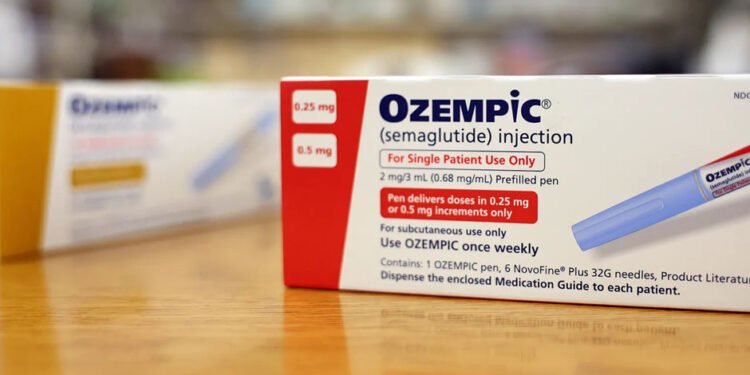Diabetes is a chronic condition affecting millions worldwide. Effective and safe treatment options are crucial for managing this disease and preventing its complications. Ozempic, a relatively new medication, has gained attention for its benefits in diabetes management. This article aims to compare Ozempic with other diabetes medications, focusing on their effectiveness and safety.
Understanding Diabetes Treatment
The primary goals of diabetes treatment include maintaining blood sugar levels within a target range, preventing complications, and improving the overall quality of life.
Various medications are used to achieve these goals, including insulin, oral medications, GLP-1 receptor agonists, SGLT2 inhibitors, and DPP-4 inhibitors. Each class works differently to control blood sugar levels, and the choice of medication depends on individual patient needs and medical history.
Ozempic, also known as semaglutide, is administered once weekly via injection and has been approved by the FDA for managing Type 2 diabetes. Its benefits include improved blood sugar control, weight loss, and a reduced risk of cardiovascular events.
Comparing Ozempic with Other GLP-1 Receptor Agonists
GLP-1 receptor agonists, such as Victoza, Trulicity, and Byetta, are commonly used in diabetes management. These medications work similarly to Ozempic by enhancing insulin secretion and slowing gastric emptying. However, Ozempic stands out due to its once-weekly dosing, which can improve patient adherence compared to daily injections like Victoza.
Effectiveness-wise, studies have shown that Ozempic provides superior glycemic control and more significant weight loss compared to other GLP-1 receptor agonists. Regarding safety, common side effects of Ozempic include gastrointestinal issues such as nausea and diarrhea. However, it is generally well-tolerated, with a safety profile comparable to other medications in its class.
Ozempic vs. Insulin
Insulin is a cornerstone of diabetes treatment, especially for Type 1 diabetes and advanced Type 2 diabetes. It is administered through injections or an insulin pump and is essential for managing blood sugar levels in patients whose bodies do not produce enough insulin.
Comparatively, Ozempic offers advantages such as weight loss and a lower risk of hypoglycemia (low blood sugar) compared to insulin therapy. While insulin remains crucial for many patients, Ozempic can be a preferable option for those looking to avoid weight gain and minimize the risk of hypoglycemia. However, Ozempic is not a substitute for insulin in patients with Type 1 diabetes or those requiring intensive insulin therapy.
Ozempic vs. SGLT2 Inhibitors
SGLT2 inhibitors, including Jardiance, Invokana, and Farxiga, are another class of diabetes medications. They function by inhibiting glucose reabsorption in the kidneys, which results in more glucose being expelled through urine. This mechanism not only helps in blood sugar control but also offers benefits such as weight loss and reduced blood pressure.
When compared to Ozempic, SGLT2 inhibitors provide similar benefits in terms of glycemic control and cardiovascular protection. However, Ozempic has a more pronounced effect on weight loss. Safety-wise, SGLT2 inhibitors carry risks such as urinary tract infections and diabetic ketoacidosis, while Ozempic’s main concerns are gastrointestinal side effects.
Ozempic vs. DPP-4 Inhibitors
DPP-4 inhibitors, like Januvia, Tradjenta, and Onglyza, work by inhibiting the enzyme DPP-4, which breaks down GLP-1. This results in prolonged GLP-1 action, leading to increased insulin secretion and decreased glucagon release.
Ozempic has shown superior efficacy in lowering blood sugar levels and promoting weight loss compared to DPP-4 inhibitors. Additionally, DPP-4 inhibitors are generally well-tolerated, with fewer gastrointestinal side effects than Ozempic. However, the weight loss and cardiovascular benefits associated with Ozempic make it a more attractive option for many patients.
Ozempic vs. Oral Medications (Metformin and Sulfonylureas)
Metformin and sulfonylureas are among the most commonly prescribed oral medications for Type 2 diabetes. Metformin works by decreasing liver glucose production and improving insulin sensitivity, while sulfonylureas stimulate insulin secretion from the pancreas.
Compared to these oral medications, Ozempic offers the advantage of significant weight loss and a lower risk of hypoglycemia. Metformin is often the first-line treatment due to its effectiveness, safety profile, and low cost. However, for patients needing additional blood sugar control or weight management, Ozempic can be a valuable addition. Sulfonylureas, on the other hand, carry a higher risk of hypoglycemia and weight gain, making Ozempic a preferable option for some patients.
Cost and Accessibility
Cost is a significant factor in medication choice. Ozempic, being a newer medication, can be more expensive than older treatments like metformin or sulfonylureas. However, insurance coverage and patient assistance programs can mitigate these costs. It’s essential to consider accessibility, including availability in different regions and practical aspects of storage and usage.
Patients using Ozempic should ask, “how long can Ozempic be out of the fridge?” According to storage guidelines, Ozempic can be kept at room temperature for up to 56 days after the first use, which adds convenience for those who may not have constant access to refrigeration.
Conclusion
Ozempic stands out as a highly effective and safe option for managing Type 2 diabetes, offering benefits in glycemic control, weight loss, and cardiovascular protection. While it compares favorably to other GLP-1 receptor agonists, insulin, SGLT2 inhibitors, DPP-4 inhibitors, and oral medications, the choice of treatment should always be individualized. Consulting healthcare professionals is vital to developing a treatment plan tailored to each patient’s unique needs and medical history.












